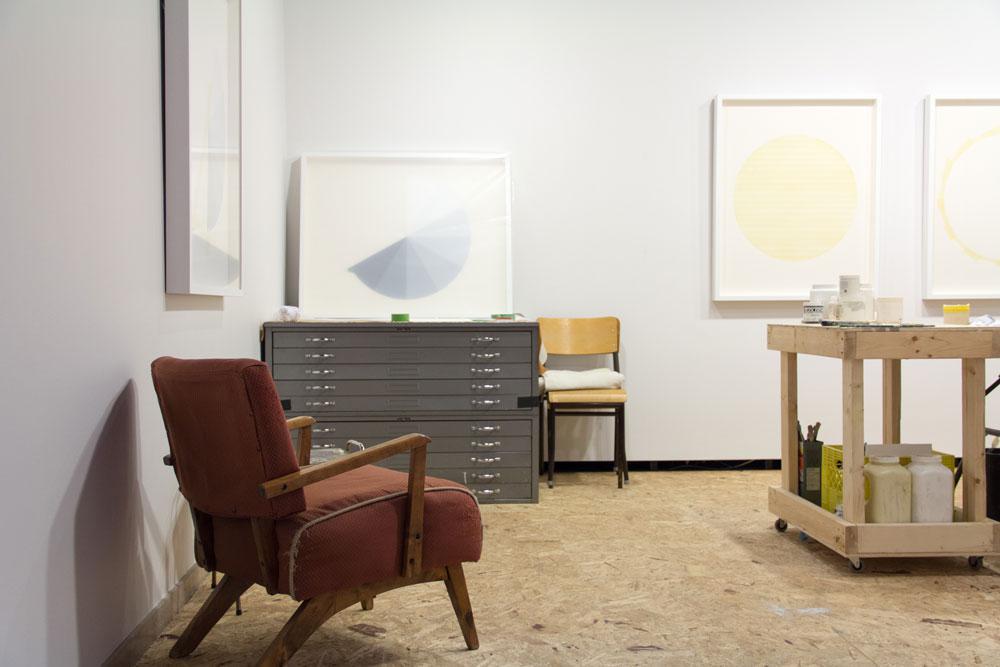Contemporary Canadian artists and critics have begun to re-examine the curious role Saskatchewan played as an outpost for midcentury American Modernism. As Nancy Tousley writes in her Spring 2014 cover story for Canadian Art—on newsstands from March 15 to June 14—Saskatoon-based artist Tammi Campbell is one of the most interesting instigators of this moment.
Saskatchewan is, of course, home to the Emma Lake Artists’ Workshop, which, in the 1950s and 1960s, attracted august, abstraction-extolling New Yorkers such as Clement Greenberg, Kenneth Noland and Frank Stella.
Campbell herself attended Emma Lake several years ago (the facility is now closed until 2016, at which point its future remains uncertain), and her practice explores the meticulous technical and intellectual processes behind the hard-edge abstraction that was so favoured during Emma Lake’s heyday. To date, Campbell is perhaps best known for her trompe l’oeilworks, which appear to be in-progress hard-edge paintings with yet-to-be-painted bars blocked off with masking tape—the latter “tape” actually being a mixture of colours, gel, graphite and powdered atomite (a.k.a. chalk).
Campbell’s fascination with process-as-artwork is demonstrated in her 2013 installation Studio, which can be viewed by clicking on the Photos icon above. Currently touring with the prairie-art group show “They Made A Day Be A Day Here,” the installation recreates her Saskatoon studio, which show curator Amy Fung describes as “the cleanest [painting studio] I had ever seen.”
As Fischli and Weiss did with their Empty Room, Campbell’s presentation of method is deceptive, for it constitutes a completed work in and of itself. (The studio’s defining aspect is a taped-off work which looks like it’s about to become a redux of one of Frank Stella’s Black Paintings, yet it is what it is—and its tape is, in fact, Campbell’s idiosyncratic paint mixture.)
In this way, Campbell is very much a postmodernist: playful, deconstructing, and critical of the authoritative histories that Modernism tried (and, arguably, failed) to build.









